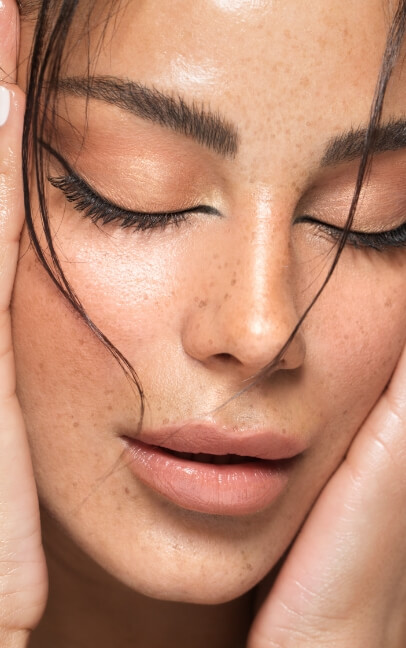
Wrinkle Reduction in Philadelphia

Introduction to Injectables
The Modern Solution to an Age-old Problem
Humans for centuries have lamented the detrimental effects of aging, sun, and weather on their skin and youthful appearance. Lines and wrinkles on cheeks and the forehead betray our past laughter, smiles, and frowns. Nowadays, though, we have new ways to return our looks to the days of youth with minimally invasive, nearly pain-free cosmetic skin treatments using both natural and synthetic dermal fillers.

How Do Dermal Fillers Work?
Let’s start with the basics
As a whole, dermal fillers are applied and behave in a similar fashion when used for facial rejuvenation. Using a syringe, a cosmetic surgeon or other trained specialist will inject the chosen material into one or more areas on a patient’s face beneath unwanted lines, wrinkles, or hollows. Fillers are used not only to reduce wrinkles but to augment or enhance features such as lips and cheekbones. The filler remains in the place it was injected for months to years, depending on the individual and the material used, softening or even eliminating creases or adding volume to the low spot being treated. While most treatments are temporary, they are also some of the safest, most effective, and inexpensive cosmetic treatments for the effects of aging skin. n the last few years, there has been a great deal of research devoted to creating longer-lasting effects for injectable fillers, and some dermal fillers now contain substances that aren’t readily absorbed by the human body in order to attain that goal. A qualified plastic surgeon should be able to advise you on the best solution to meet your own objectives.

What Are Injectable Fillers Made Of?
Though the line has blurred over the recent past, due to “natural” substances being synthesized in laboratories, dermal fillers were commonly classified into two categories, natural (fat and collagen) and artificial (trademarked products such as Radiesse®, Restylane®, Perlane®, Juvederm®, and more). In fact, many of these synthetic substances consist primarily of hyaluronic acid, a compound that is found naturally in human skin and tissue.
When cosmetic surgeons refer to fat injections or fat transfer, they mean removing fat from one part of a patient’s body and moving it to another site (after the fat undergoes a purification process). One advantage of using a patient’s donated fat cells is that allergic reactions are practically impossible. Some of the fat will be re-absorbed, but the proportion varies widely based on the location and the surgeon’s technique.

Collagen fillers
Collagen is another natural substance; a protein found in all mammals’ skin, bones, and connective tissues. Collagen fillers used for cosmetic purposes are produced with either a human or bovine base. It is used in a similar way to fat to lessen the appearance of nasolabial folds, frown lines, crow’s feet, and scars.
There are several types of synthetically produced dermal fillers that utilize different substances, but the most common are based on hyaluronic acid. Constituted into gel-like liquids of varying thicknesses and textures, these products tend to offer longer-lasting results from a single treatment than collagen or fat. Hyaluronic acid-based products include Juvederm®, Restylane®, Perlane®, and Dermalive®. Products that use other biocompatible compounds are Radiesse®, ArteFill©, and Sculptra®.
What is the injection process?
As stated, dermal fillers are simply injected into the appropriate area by your cosmetic or plastic surgeon. However, training and experience have a great effect on the patient’s final appearance and the effective length of treatment. Most treatments require a series of small injections at different depths for the best results. Properly performed injections also reduce the potential swelling, bruising, and tenderness associated with recovery. Some products may require massaging or other physical manipulation after injection to smooth out granularity or lumpiness.
Injectable fillers side effects
“Many patients enjoy their positive results within hours of treatment.”
The most serious side effects for most patients after treatment will be temporary redness, swelling, and occasional numbness or bruising. It is common practice for a surgeon to overfill an area when using any dermal filler to account for some immediate absorption by the patient’s body, and this may take anywhere from a few days to weeks to subside. Many patients enjoy their positive results within hours of treatment.


